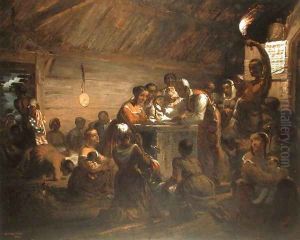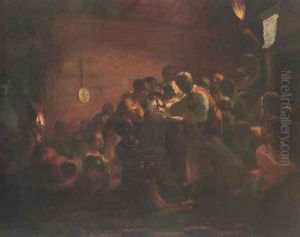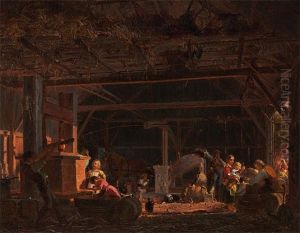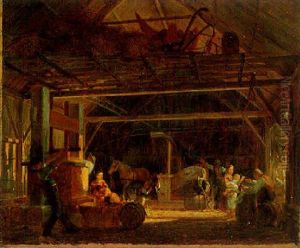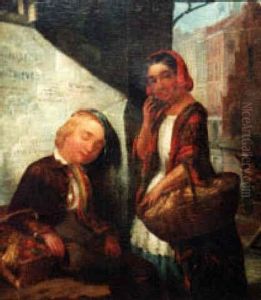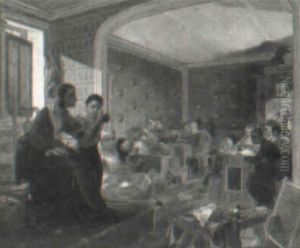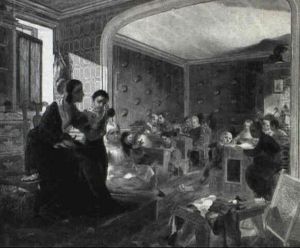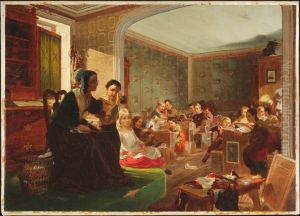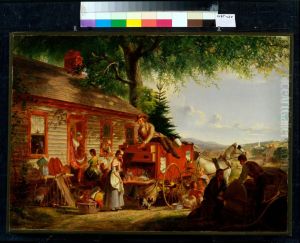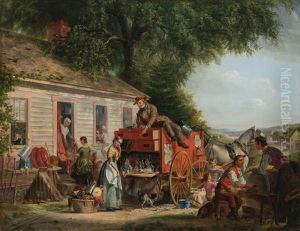William Tolman Carlton Paintings
William Tolman Carlton was an American artist known for his paintings that captured various facets of American life and landscapes during the 19th century. Born in 1816, his contributions to the American art scene were significant during his lifetime, albeit less known in contemporary times. Carlton's work often depicted scenes from the American Civil War, portraits, and historical events, showcasing his versatility and keen observation of the world around him.
Carlton's education and early career were marked by his studies with established artists of the time, which helped him develop a distinctive style that blended realism with a touch of romanticism. This was a period in American art where there was a burgeoning interest in depicting the realities and challenges of American society, and Carlton's work resonated with this movement. His ability to capture the essence of his subjects made him a sought-after portraitist, while his historical paintings contributed to the narrative of American identity.
Throughout his career, Carlton exhibited his work in various prestigious galleries and was recognized by his peers for his contributions to the art world. Despite this, much of his work was overshadowed by his contemporaries, and he did not achieve the same level of fame as some of his peers. After his death in 1888, Carlton's paintings continued to be appreciated by art historians and collectors who recognized the depth and significance of his work in the context of American art history.
Carlton's legacy is that of a skilled artist who captured the spirit of his time through his meticulous and thoughtful paintings. Although not as widely known today, his work provides valuable insight into the social and political landscape of 19th-century America, making him an important figure in the study of American art history.
